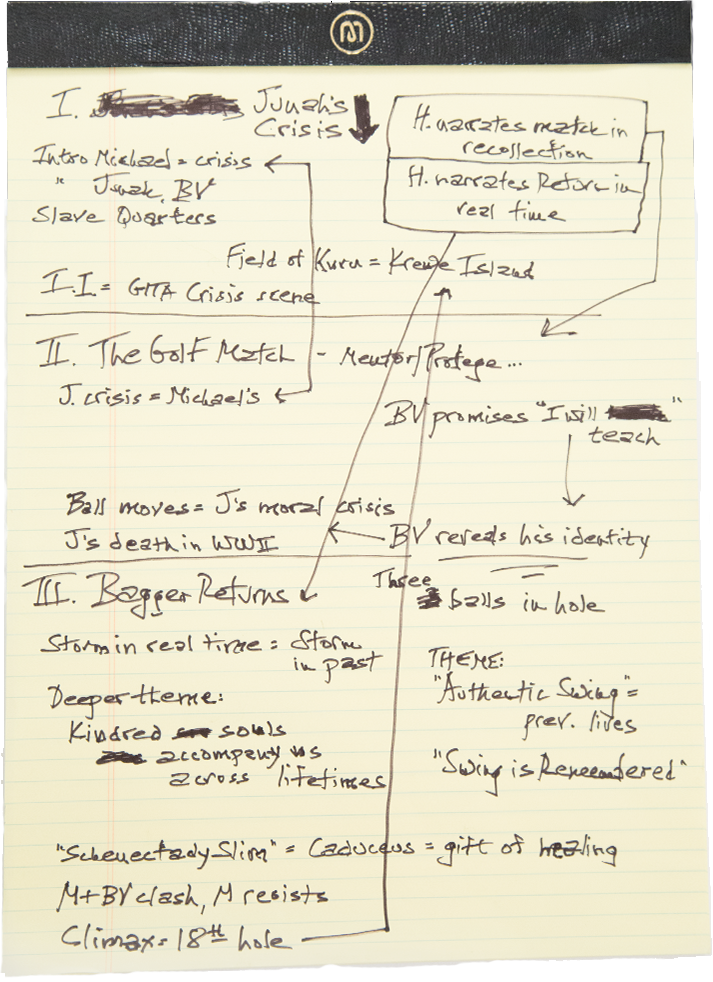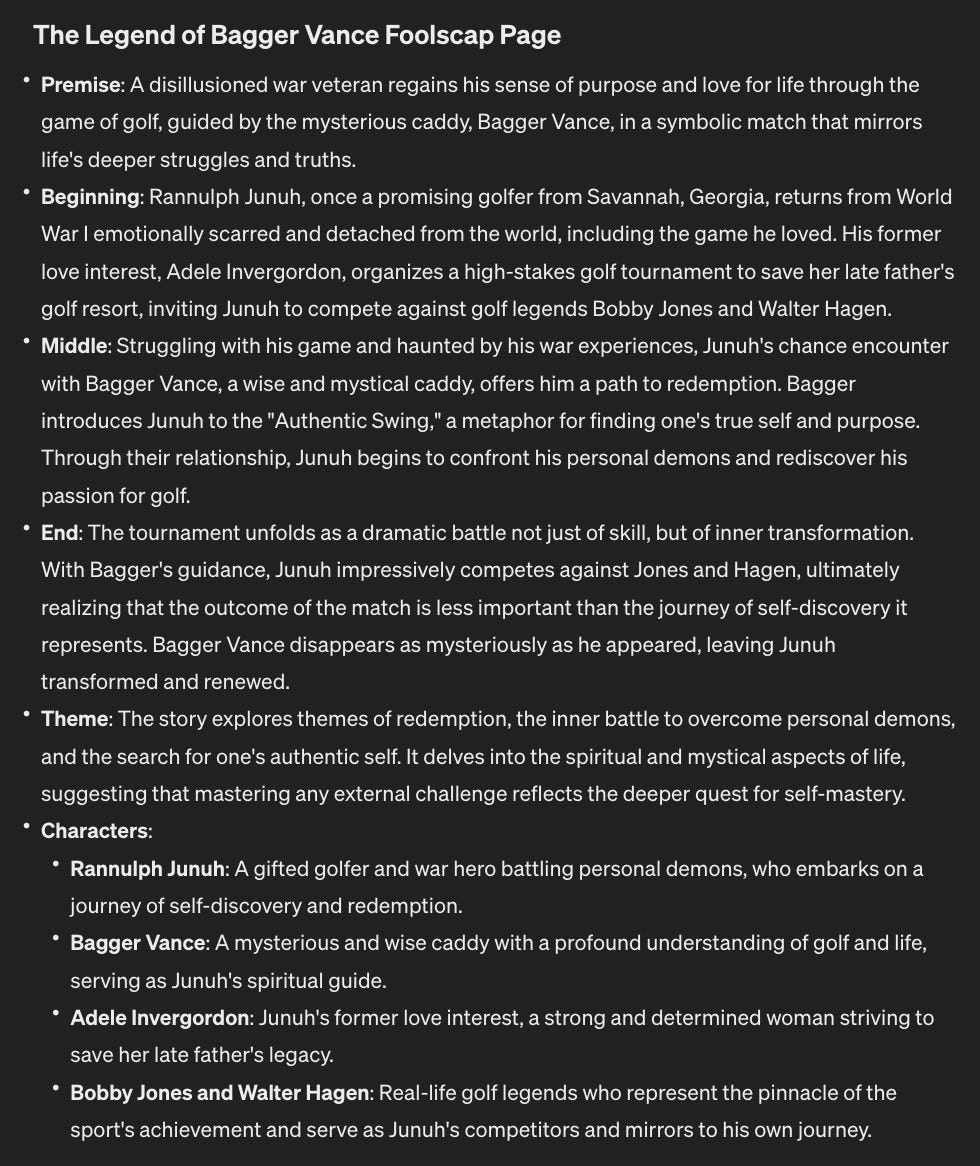Hey there!
Steven Pressfield, best-selling author of The Legend of Bagger Vance, War of Art, and Gates of Fire, wrote for 27 years before his first novel was published.
That’s a looooong time. Steven knows a thing or two about putting in what he calls “the work.” Since then, he’s written over 20 books and sold millions of copies.
And he gets asked all the time:
“So, how did you break through?”
His answer?
Prepare a Foolscap Page.
The Foolscap Method
The idea of the “Foolscap Method” is to outline your novel on one page—quickly and without overcomplicating things.
Pressfield credits the Foolscap technique to his mentor and prolific documentarian, Norm Stahl. Norm passed it on to him in an object lesson over a cheeseburger lunch during a particularly low point in Steven’s life. Norm listened patiently to Steven lament over the challenges of starting his first novel. Then, when Steven paused to take a bite of his burger, Norm pulled out a pad of yellow legal-sized Foolscap paper and set it on the table.
“Steve,” Norm said, “God made a single sheet of yellow foolscap to be exactly the right length to hold the outline of an entire novel.”
And that was that.
Steven turned pro.
The 4 Fundamental Sections Of A Foolscap
The genius of the "Foolscap Method" is that it forces you to boil down your idea to the essentials and avoid the pitfalls of overpreparing. It also allows you to see your book as a whole from start to finish. So, forget about a lengthy 55-page outline and start from the get-go with a single page.
Now, what goes on the page?
Steven breaks the Foolscap down into 4 main sections.
Section 1: The Beginning, Middle, & End
First, you break down your story into three distinct parts.
Act 1
Act 2
Act 2
Each act symbolizes the beginning, middle, and end.
Act I introduces your protagonist, their world, and the inciting incident that propels them into conflict. Act II is where the hero navigates a series of challenges and obstacles. Finally, Act III resolves the central dramatic question, delivering a climax and the resolution.
For The Legend of Bagger Vance, Steven's Foolscap looked like this:
Section 2: The Narrative Device
The next step is to decide the narrative device or how to tell the story.
Will you adopt an omniscient vantage point, periodically dipping into the minds of multiple characters?
Or will you opt for a more intimate first-person portrayal, filtering the entire narrative through the subjective experiences of a single protagonist?
Or maybe a present-day narrator recounting past events.
For example, in Moby Dick, Ishmael, a crew member of the Pequod, serves as the narrator in first-person. In The Legend of Bagger Vance, Steven tells the story through the recollections of a young boy named Hardy Greaves. It's a blend of nostalgic memory and real-time events.
Your choice here shapes the story's voice and, ultimately, your audience's emotional connection to the material.
Section 3: The Controlling Idea
Next comes the theme of your story.
This is what gives your story meaning.
Casablanca is about personal growth and sacrifice.
Rocky is an underdog's resolve to prove his worth.
Bagger Vance is the journey to rediscover one's essence or soul.
A great story builds on the human truths that remain in the reader's mind long after the book is finished.
Section 4: The Story Throughline
Finally comes the inciting incident and the climax.
These serve as the backbone of your story.
The inciting incident is when your story begins, setting the wheels of the narrative in motion. And the climax is where the story reaches its resolution, the peak of your narrative arc.
In Rocky, the story kicks off when Apollo Creed, the reigning world champion, chooses Rocky, a relative nobody, to fight against. This moves the story from "status quo" into conflict and points straight toward the climax, a title fight.
It's this throughline that guides your narrative from beginning to end.
Now, let's look at 2 different ways you can leverage AI to help you apply the Foolscap Method.
How To Create A Foolscap With ChatGPT
In case you can't read Steven's handwriting above, this is how ChatGPT breaks down The Legend of Bagger Vance:
Pretty cool, right?
Let me show you how.
1. Reverse Engineer A Best-Seller
If you want to reverse-engineer any best-selling book with AI, here's a quick prompt for extracting the core of any book using the Foolscap Method.
Keep reading with a 7-day free trial
Subscribe to Fiction Writing With AI to keep reading this post and get 7 days of free access to the full post archives.






